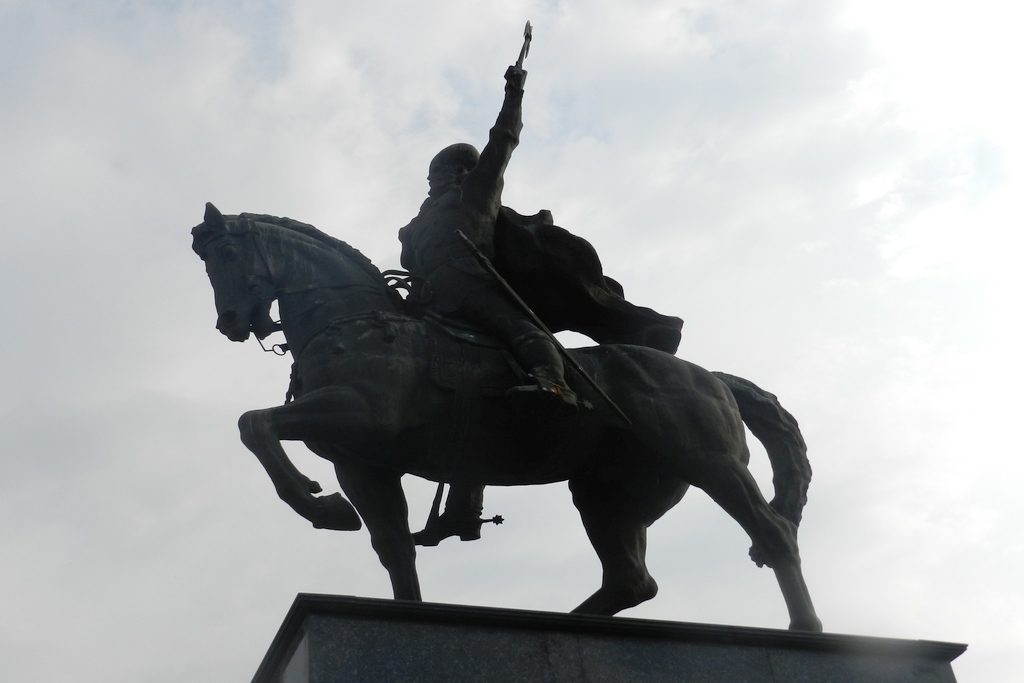

The idea of a statue at Craiova of the great voivode, who is connected to the city also by the fact that he owed the high office of great ban before being a regnant, dates back to the beginning of the 20th century.
In 1913, there was constituted an initiative committee for building up a monument dedicated to Michael the Brave at Craiova. In 1927, the society the “Friends of Science” was suggesting as place of emplacement Unirii Market. In 1933, they addressed the City Hall of the Capital with the request of moving the statue of Michael the Brave to Craiova, if in Bucharest there will be built up a bigger one.
The sculptor D. Pavelescu – Dimo prepared a simulation for executing an extremely beautiful monument dedicated to the great voivode, but which wasn’t materialized. Unfortunately, the people from Craiova had to wait for many years before seeing on the emplacement the current statue, after it has stood for many years in the courtyard of the Art Museum, because of different reasons.
Born in 1557, Michael the Brave became prince of Wallachia in the fall of the year 1593, being at the same time regnant of Transylvania between 1599 and 1600, as well as prince of Moldavia in 1600.
Being confronted with the great powers of those times – the Ottomans, the Hapsburgs, the Polish – Michael the Brave succeeded in doing something which his ancestors didn’t, executing – for a short period of time – the independence, doubled by the national unity.
Victorious at Călugăreni, Târgoviste and Giurgiu, and then at Șelimbăr and Guruslău, defying the power of the Ottoman armies and the ones of Andrei Báthory, prince of Transylvania and the suzerain of Wallachia, as well as the Polish troops in Moldavia, Michael the Brave became ”Restituro Daciae”, according to the mentions of the contemporary sources, which acknowledged, in an indirect manner, the identity of the Dacian space with the one of the Romanian ethno genesis.
On the 1st of November 1599, Alba Iulia became capital of all the Romanians, the regnant bringing under his command “and the territory of Ardeal, what I wanted, Moldavia, Wallachia!”
The name and the figure of Michael the Brave are and will be kept in the sacred legacy of the Romanian all around the world.
On the day of the 16th of August 1501, Michael the Brave, in the command of his army, he went to Turda, where he established his camp. There, in the morning of the day of the 19th of August, he was assassinated dastardly from the order of the Emperor Rudolf the IInd, by the general Gheorghe Basta.
The corpse of Michael the Brave remained at Câmpia Turzii, and his head was buried at the Monastery Dealu, situated near Târgoviște.
